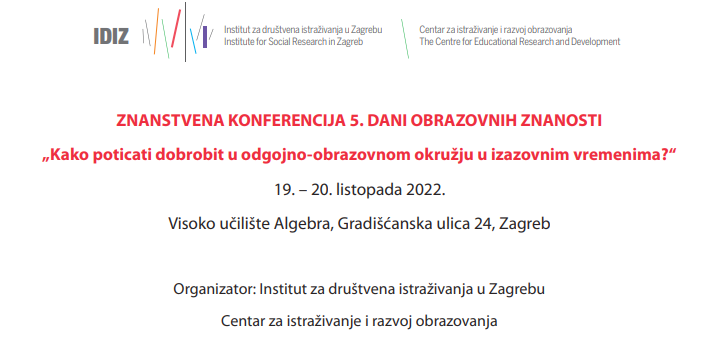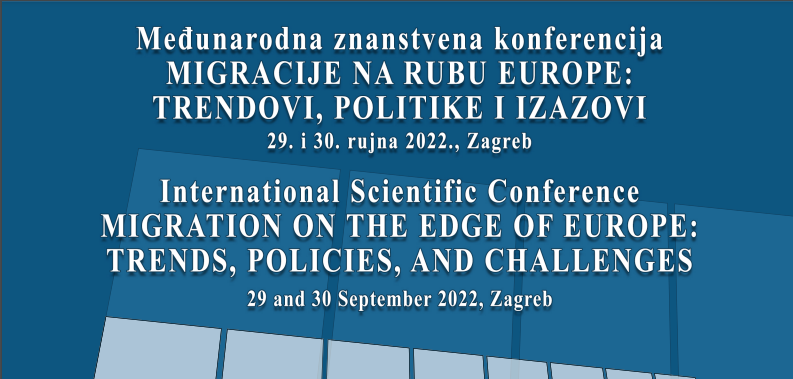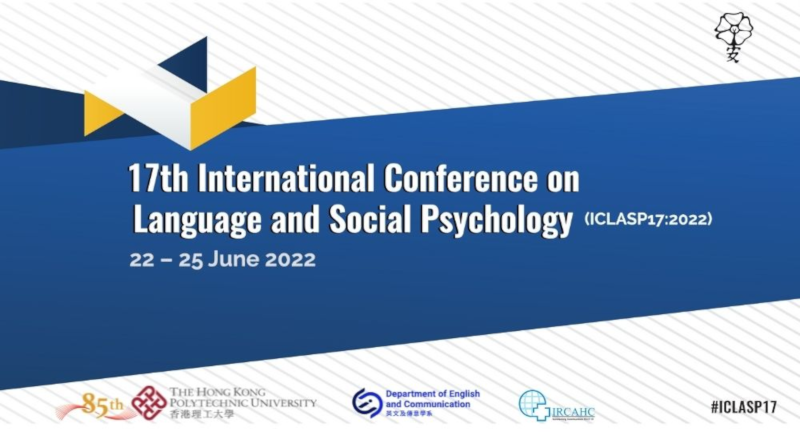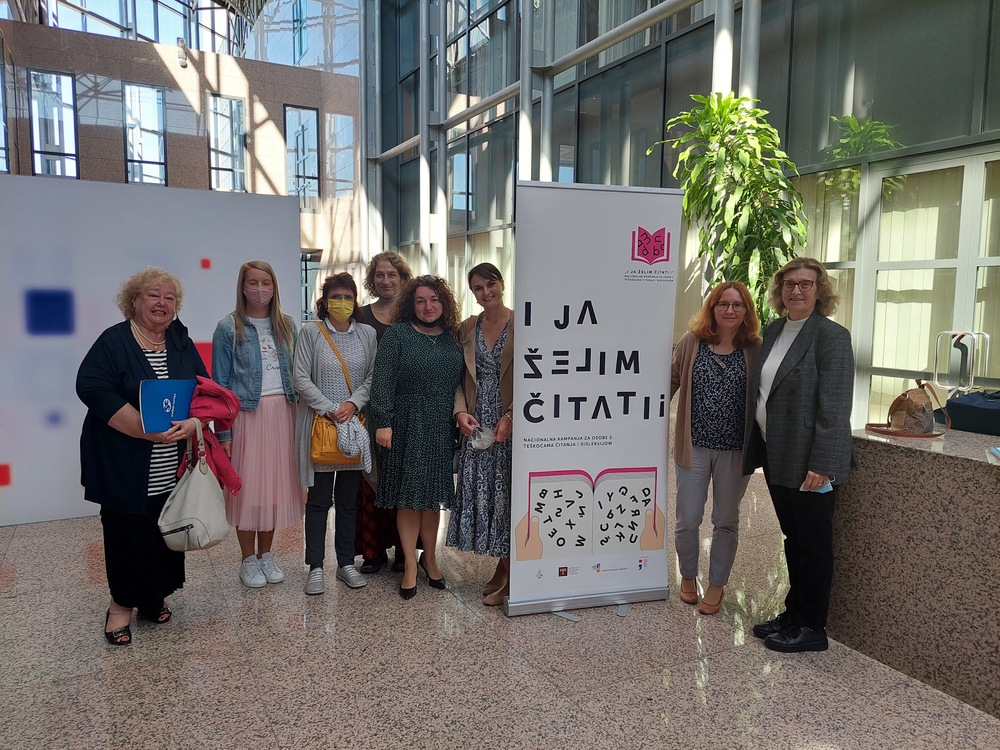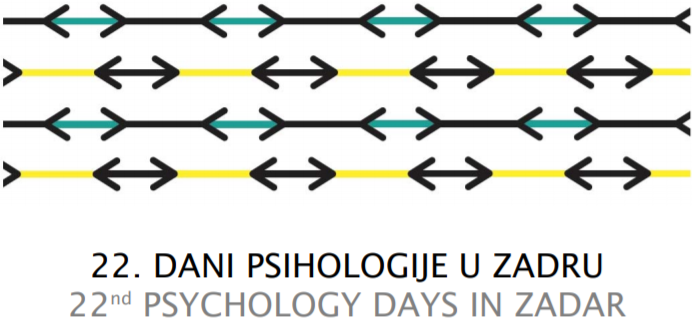Sudjelovanje na konferenciji “Empirijska istraživanja u psihologiji”, 31.3. - 2.4. 2023. godine na Filozofskom fakultetu u Beogradu
If they want me to, I will: The role of norms in predicting attitudes towards refugee peers
Stanković, N., Čorkalo Biruški, D., Vrdoljak, A., Fasel, R., Butera, F. i Jelić, M.
School plays a key role in the social integration of refugee children. It offers an environment where children adopt norms about social relations by observing others. Besides parents, teachers and peers become significant others in children’s lives during school age. Moreover, children develop their moral compass in deciding what is good and bad. Therefore, the study aimed to examine the role of the personal norm and perceived teachers’, peers and parental norms on three types of attitudes towards refugee children in the context of limited opportunity for intergroup contact. In autumn 2021, a questionnaire was administered in 17 Croatian schools. In total, 761 host-community children from 2nd to 8th grade who attended classes with refugee children participated in the study. Children were asked to indicate how wrong it is if their peers exclude a refugee child from social situations (i.e. hanging out after school, birthday party and group on social media). Children’s reasoning about moral exclusion was a proxy of personal norm about relations with refugee peers. Perceived social norms were assessed with three separate subscales about teachers’, peers’ and parents’ support of contact with refugee children (i.e. help, make friends and hanging out with refugees). The results of three hierarchical regression analyses showed that when controlling for age and gender in the first step and adding norms in the second step, the models of general attitude (F(6,705) = 37.556, p < 0,001, R 2 = 0.242), social acceptance (F(6,701) = 58.770, p < 0,001, R 2 = 0.335) and contact intentions (F(6,715) = 76,950, p < 0,001, R 2 = 0.392) were significant. Even though perceived social norms correlate moderately to highly, their relative importance differed between the three outcomes. Thus, peer and personal norms significantly predicted all three types of attitudes, while teachers’ norms predicted general evaluation and social acceptance of refugee peers but not contact intentions. Parental norms were significant predictors only for contact intention. Regarding the sociodemographic variables, age was a relevant predictor for general attitude and, together with gender, significantly predicted social acceptance. We will discuss the importance of social and personal norms in building the majority’s positive intergroup relations with refugee children to facilitate their social integration.
Keywords: norms, attitudes, intergroup contact, refugee children
- Poster: If the want me to, I will
What is it like to hang out with a refugee? The content of host-society children’s imagined contact with refugee children
Vrdoljak, A., Stanković, N., Čorkalo Biruški, D., Fasel, R., Butera, F. i Jelić, M.
Existing research suggests that imagined contact interventions could be useful in the preparation of host-society children for intergroup contact with refugee children. Even though the success of this intervention depends on the quality of contact, little is known of the content of these imagined interactions, especially when it comes to children. Therefore, the aim of this study was to explore the content of host-society children’s descriptions and drawings created during an imagined contact intervention, and to assess the frequency with which detected topics occur. We have conducted a four-sessions long intervention in 28 elementary school classes in Croatia, with 478 pupils aged from ten to fourteen. During the first, second and fourth session children have written short descriptions of their meeting with a refugee child (N = 1251 descriptions), and in the third session they have drawn a picture of an imagined encounter (N = 412 drawings). All of the children’s outputs were coded by two independent coders using predetermined categories, and disagreements were resolved by a third coder. Outputs were coded for the occurrence of intentions for future contact, success and modes of communication used, as well as for the occurrence and kinds of prosocial behaviours towards imagined refugee children. The small number of children who did not follow the instructions were excluded from the further analysis. The results indicate that virtually none of the children describe unsuccessful communication with an imagined refugee child across sessions. Their communication modes mainly included using a common foreign language, such as English or German, but also Croatian, nonverbal and technology-mediated communication or learning the language of a refugee child. Across sessions, having intentions for future contact with an imagined refugee child was brought up more often than prosocial acts. However, percentage of children mentioning these topics varied between sessions. Prosocial behaviours included helping refugee child with the language, completing school assignments and making friends, as well as giving gifts and showing them around the school. In conclusion, this study suggests that children can imagine successfully communicating with refugee children, and that their imagined interactions often include plans for future contact and prosocial behaviour. The results could help to shed a light on host-society children’s expectations from their interactions with refugees.
Keywords: Imagined contact, refugee children, intergroup communication, prosocial behaviour
